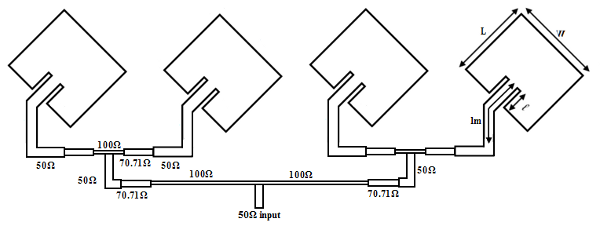I'm trying to build an array of patch antennas in order to receive a GPS signal. The idea is to build 4 patches and connect them with a corporate feed network. An example of corporate feed is this one.

In my design the 4 patches are oriented in 4 different direction (eg. the first one looking at EAST, the second WEST, the third NORTH and the last one looking at SOUTH).
Now I have two question about this design:
- The output are not matched (since I'm using T-junctions) so some of the power received will come back at the antenna and will be re-radiated. Is this a problem?
- Can I have total cancellation if, for example, two patched receive two identical signal with 180 degree of phase shift between them?
Unfortunately I can't use other antenna design such as dipole antennas or helix. The problem is that this antenna will fly on a home-made rocket: the rocket will spin fast after lift off so I decided to design this array in order to achieve the best omnidirectional antenna possible while preserving the aerodynamics of the rocket itself.
The rocket is fully metallic, so, no antennas inside.